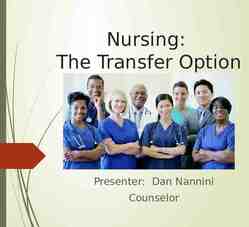Stroke services Early supported hospital discharge Six month reviews
10 Slides1.86 MB
Stroke services Early supported hospital discharge Six month reviews
Stroke Facts and Figures There are about 152,000 strokes in the UK every year, in our CCG area last year there were 729 strokes Nationally, 25% of stroke survivors are aged under 65. In our area 20% are under 65, but this number is rising Nationally 30%-50% of people have a long term disability following a stroke
Why send patients home early? NHS priority to shift appropriate care into the community Local priority to integrate health and social care Part of a whole systems stroke review Stroke Evidence Base for Better Outcomes Stroke in-patient units Stroke ‘Early Supported Discharge’
‘Early Supported Discharge’ - local model Current model Admission Hospital Acute Home Shift in location of community rehabilitation ESD model Discharge Rehab Rehab Rehab Support ESD Service Support
Local implementation Integrated team for early hospital discharge, offering health, social care and voluntary care — — — — Up to six weeks intensive intervention at home Access to psychological support Embedded stroke association services Core and specialist competencies Integrated — — Across the Stroke Care Providers e.g. Hospitals With other non-stroke services
Working with primary and community care teams Primary and community care will have: access to stroke specialist medical resource access to specialist advice option to participate in Early Supported Discharge multidisciplinary and patient family meetings In addition: no expected increase in primary care stroke workload primary care will be informed of all transfers of care all patients will be transferred with a joint health and social care plan improved information and advice for all stroke survivors
Six-month reviews for all Stroke survivors, carers and families’ needs considered and addressed Agreed action plan drawn up Signposting to further sources of help and advice
Evidence tells us that: Selected stroke patients return home earlier More likely to be independent and living at home Express satisfaction with services No adverse effect on the mood of patients or carers Benefits seen with coordinated teams and recruitment of mild to moderate stroke
Group work
Key Discussion Points How do we spread an effective stroke prevention message? How do we help stroke survivors, the public and professionals access information and advice to help them manage their stroke? What are the roles and responsibilities of patients, carers, GPs and the wider community in stroke care, support and prevention?















